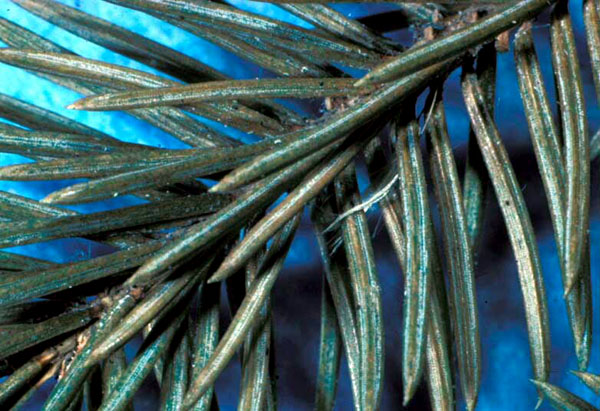Issue 1, April 17, 2009
Spruce Spidermite
Spruce spidermite and its needled evergreen relatives such as pine mite and juniper mite are active and feeding in the spring. They are present through April in southern Illinois, but are active progressively later farther north. In northern Illinois, these mites are active through May. These mites are also active in late summer and early fall, but treatment timing then is more difficult.
Scout for spidermites by holding a sheet of white paper under a branch and striking it sharply. Many of the mites will be dislodged onto the paper where they can be easily seen. Those that streak green when smashed are feeding on the plant; those that streak red are predatory mites feeding on the harmful species. If predatory mites are numerous, natural control will probably control the damaging mites without miticide application.
Spidermites feed by sucking the juices out of groups of cells. Due to the removal of the green chloroplasts, these cells turn white, resulting in white-speckled foliage that appears light-green from a distance. Soon these damaged cells die, turning brown, resulting in brown-speckled foliage that appears bronzish from a distance. Widespread, heavy damage results in the death of the plant. Most needled evergreens are attacked by spruce spidermite or one of its relatives, but spruce is the most commonly damaged.

Spidermites are tiny, eight-legged, soft-bodied animals more closely related to spiders than insects. They are so tiny that one hundred or more could sit on the head of a straight pin. Because they are not insects, many insecticides will not control them. Spray a labeled miticide or acaracide such as acequinocyl (Shuttle), bifenthrin (Talstar, Onyx), insecticidal soap, spiromesifen (Forbid), or summer spray oil to obtain control.--Phil Nixon
Author:
Phil Nixon